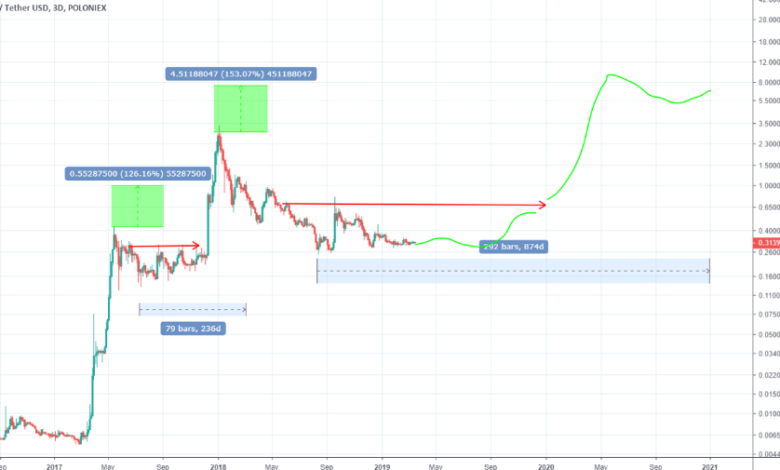XRP Price USD and Its Correlation with Global Financial Trends

Cryptocurrencies have gained significant attention in recent years, with XRP emerging as one of the most talked-about digital assets. XRP, created by Ripple Labs, is designed to enable fast, low-cost international money transfers. As with all cryptocurrencies, xrp price usdt is subject to numerous factors, including market demand, technological developments, and broader financial trends.
Understanding the correlation between XRP’s price in USD and global financial trends is essential for investors and enthusiasts alike. This article delves into how these financial dynamics impact the price of XRP and its broader role in the cryptocurrency landscape.
Introduction to XRP and Its Role in the Financial World
XRP is a unique cryptocurrency in that it was designed with a specific use case in mind: to facilitate cross-border payments. Unlike Bitcoin, which operates primarily as a store of value, XRP’s focus is on improving the global financial system by offering fast and affordable international money transfers.
Ripple Labs, the company behind XRP, has partnered with numerous financial institutions worldwide, aiming to revolutionize the way money is transferred across borders. XRP functions as a bridge currency, helping to settle payments between different fiat currencies in a secure and efficient manner.
What Influences XRP’s Price in USD?
XRP’s price in USD is not only driven by its inherent technological features but also by several macroeconomic and financial trends. Here are some of the main factors that influence the price of XRP:
- Market Demand and Speculation
Just like other cryptocurrencies, XRP’s price is largely influenced by demand and speculative trading. When investors believe in the future potential of XRP, they buy and hold the currency, pushing its price higher. Conversely, market sentiment can also drive prices down when investors feel uncertain or when the cryptocurrency market experiences a correction. - Regulatory News and Legal Challenges
One of the key factors affecting XRP’s price is the ongoing legal battle Ripple faces with the U.S. Securities and Exchange Commission (SEC). The outcome of this lawsuit, which is centered around whether XRP is classified as a security, could significantly impact its price. Positive legal developments typically lead to a rise in XRP price in USD, while negative news can cause significant downturns. - Global Financial Trends and Economic Events
The broader financial market trends, such as inflation rates, interest rates, and global economic events like recessions or financial crises, also play a crucial role in determining XRP’s price. These events influence investor confidence in traditional financial markets, which in turn affects their investment decisions in cryptocurrencies like XRP.
XRP Price USDT and Its Link to Global Financial Trends
Impact of Global Economic Stability on XRP
Global economic stability has a significant impact on cryptocurrency markets, including XRP. In times of economic uncertainty, investors often turn to alternative assets, such as gold and digital currencies, as a hedge against traditional market volatility. If traditional markets experience a downturn, the demand for digital assets like XRP tends to rise as investors seek assets with the potential for high returns.
For example, during the 2020 COVID-19 pandemic, the global financial markets experienced a significant decline. Many investors saw cryptocurrencies, including XRP, as a potential safe haven. As traditional assets like stocks and bonds suffered, the price of XRP surged as it became an attractive alternative investment.
Conversely, when the global economy is in a period of stability and growth, the demand for cryptocurrencies may decrease. In this environment, traditional assets, such as stocks and bonds, are often seen as safer investments, which may lead to a decrease in XRP’s price in USD and other fiat currencies.
Central Bank Policies and Interest Rates
Another key factor influencing XRP price USDT is the monetary policy set by central banks. For instance, the Federal Reserve’s decisions regarding interest rates can have a ripple effect (pun intended) on the entire financial market, including cryptocurrencies. When interest rates are low, as they were in the aftermath of the 2008 financial crisis and again during the COVID-19 pandemic, more people may turn to speculative investments, including XRP.
On the other hand, when central banks raise interest rates to combat inflation or address economic overheating, traditional investment vehicles like bonds and savings accounts offer higher returns, reducing the appeal of cryptocurrencies like XRP. In this case, the price of XRP could experience downward pressure as investors shift their assets from high-risk to safer options.
Global Trade and Cryptocurrency Adoption
The growth of global trade and the increasing adoption of cryptocurrencies by governments, financial institutions, and corporations also influence the price of XRP. As more financial institutions recognize the potential of blockchain technology, the demand for XRP as a bridge currency for cross-border payments rises.
For example, if a country or region experiences a surge in international trade or enters into a trade agreement that supports the use of blockchain technology, XRP’s value could see a rise as it becomes the preferred method of payment. This is especially true if governments or central banks adopt blockchain as a part of their monetary system, driving demand for XRP.
The Role of Investor Sentiment in XRP’s Price Movements
Investor sentiment plays a significant role in the price of XRP, and it is often influenced by both global financial trends and market conditions. The price of XRP can fluctuate wildly based on social media discussions, public perceptions of Ripple’s partnerships, and broader cryptocurrency trends. Positive news about XRP’s use case or new partnerships with large financial institutions can lead to a surge in demand, increasing the price of XRP in USD.
Moreover, the rise of institutional investors in the cryptocurrency space has increased the influence of large market players in determining XRP’s price. Institutional investment tends to follow global economic trends, such as inflationary pressures or global financial crises, further illustrating the connection between XRP’s price and broader financial market movements.
How XRP Price USDT is Affected by Cryptocurrency Market Cycles
Cryptocurrency markets are known for their volatility, and XRP is no exception. As part of the broader cryptocurrency ecosystem, XRP’s price movements are often correlated with the overall health of the crypto market. When Bitcoin and Ethereum, the two largest cryptocurrencies, experience price rallies, XRP often follows suit.
Similarly, when the cryptocurrency market experiences a downturn, XRP’s price in USD and USDT tends to drop in tandem. This cyclical behavior is a result of the interconnected nature of digital assets, where investor sentiment toward one cryptocurrency often influences the entire market. Additionally, global financial trends such as inflation or economic crises also have a direct impact on the cryptocurrency market as a whole.
Factors Impacting XRP Price USD and USDT: A Summary
| Factors | Effect on XRP Price |
|---|---|
| Global Economic Stability | Economic downturns tend to increase XRP’s price. |
| Central Bank Policies & Interest Rates | Lower interest rates can boost XRP demand. |
| Global Trade & Cryptocurrency Adoption | Increased trade agreements raise XRP’s value. |
| Investor Sentiment | Positive sentiment from news & partnerships spikes XRP’s value. |
| Cryptocurrency Market Cycles | XRP’s price often follows the broader market trend. |
FAQs About XRP Price USD and Its Correlation with Global Financial Trends
1. Why does the price of XRP fluctuate so much?
The price of XRP fluctuates due to market demand, speculative trading, regulatory developments, and broader economic trends. External factors such as global financial instability or changes in investor sentiment also contribute to XRP’s price volatility.
2. How do global financial trends influence XRP’s price in USD?
Global financial trends such as economic stability, interest rates, and trade agreements can directly impact investor sentiment and demand for XRP, leading to fluctuations in its price. For example, economic instability often leads to increased demand for alternative assets like XRP.
3. What role do central banks play in XRP’s price movement?
Central banks influence XRP’s price by setting interest rates and implementing monetary policies. When interest rates are low, cryptocurrencies like XRP become more attractive to investors, potentially increasing its price.
4. Can XRP’s price be affected by government regulations?
Yes, government regulations play a major role in the price of XRP. Legal challenges or favorable regulations regarding cryptocurrencies can either increase or decrease investor confidence, leading to price fluctuations.
5. How does institutional investment affect XRP’s price?
Institutional investment can have a significant impact on XRP’s price. As more financial institutions invest in XRP, it can drive demand and increase the price, particularly when these investments align with global financial trends.
6. What is the relationship between XRP and Bitcoin?
XRP often moves in correlation with Bitcoin, as both are part of the broader cryptocurrency market. When Bitcoin experiences price movements, XRP tends to follow similar patterns, highlighting the interconnectedness of the digital asset space.
Conclusion
XRP’s price in USD is influenced by a complex set of factors, including global financial trends, investor sentiment, and technological advancements. Its unique position as a bridge currency for international payments makes it particularly sensitive to shifts in the global economy. As the world continues to adapt to blockchain technology and cryptocurrency adoption rises, XRP’s role in the financial system will likely grow, and its price will continue to reflect the dynamic relationship between digital assets and traditional financial markets.
By understanding these factors, investors can better navigate the volatility of XRP and other cryptocurrencies, making informed decisions based on both the current market climate and long-term global trends.




